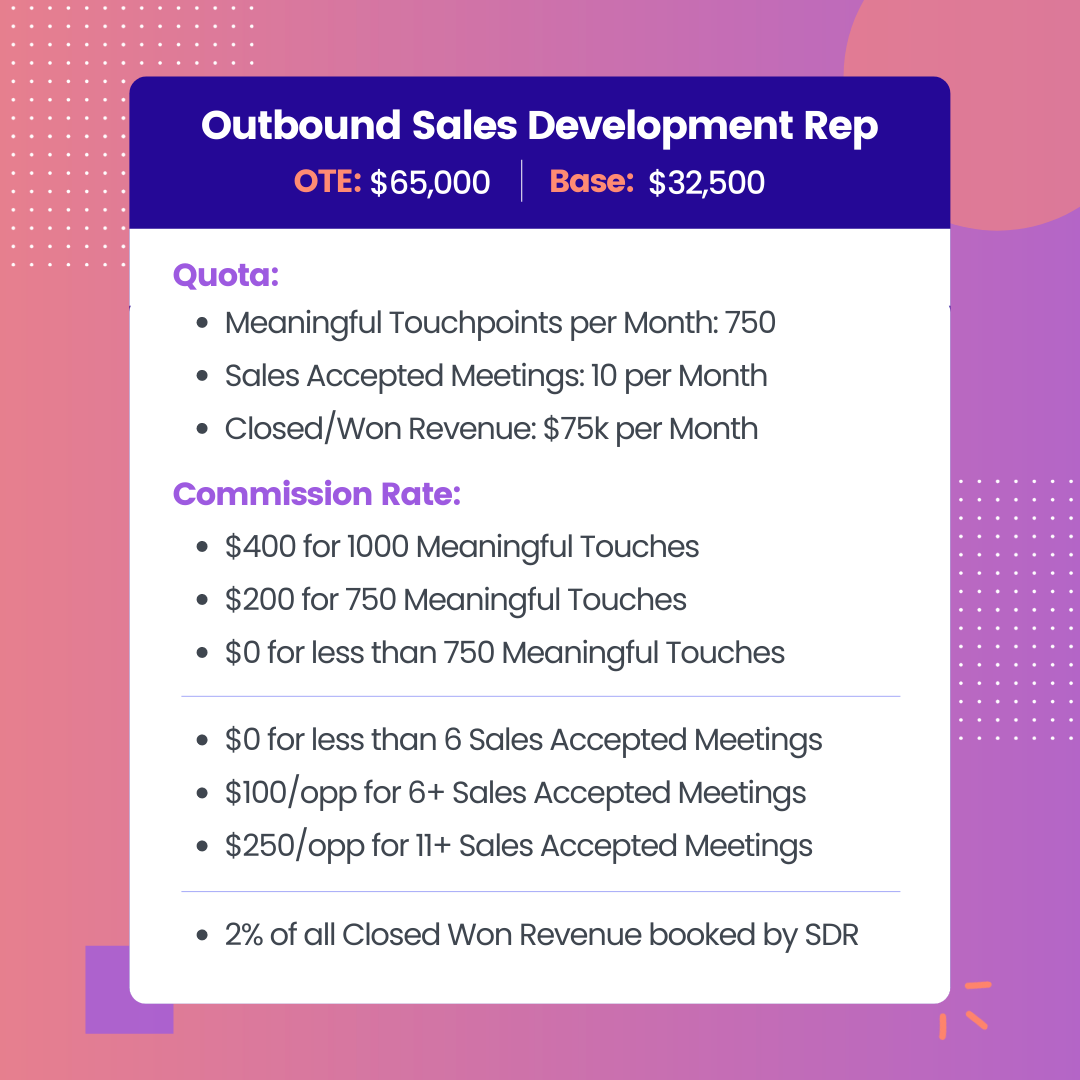There’s no one-size-fits-all approach to setting quotas. What works for one company won’t necessarily work for another. But one thing sales and RevOps leaders all have in common is that they collectively struggle to set realistic, motivating sales quotas. In fact, with only 24.3% of sellers achieving quota attainment in 2022, it’s unsurprising that quota setting is the number one challenge leaders cited going into 2023 (source).
If quota setting is critical to forecasting, goal setting, and sales capacity planning, how is it that so many organizations still miss the mark? There are a few factors that contribute to this. These include poor planning and prioritization, lack of insight and data, and, finally, selecting a quota setting methodology that doesn’t align with overarching business goals.
Today we’re going to take a deeper look at the impact quota setting has on your business. Then, we’ll discuss the pros and cons of several different quota setting methodologies. Let’s get into it!
Why does quota setting have such a big impact on business performance?
Quota planning impacts nearly every aspect of a business’s GTM motion and revenue function. Here’s why: the sales quota is a key variable in many of the equations that dictate core business functions. These functions include territory management, goal setting, capacity modeling, forecasting, sales performance improvement, seller experience, and countless other exercises that set a business up for success– or failure.
By setting realistic yet challenging sales quotas, organizations can motivate employees, focus their team’s efforts, and better understand their performance. However, if quotas are set too high or too low, it can negatively affect employee morale and productivity, leading to underperformance or sales burnout. Thus, proper quota setting requires careful consideration of various factors including market conditions, sales trends, and individual employee capabilities.
Even once you think you’ve gotten a hang of quota setting, conditions change quickly and can render a once effective sales plan, well, useless. That’s why an effective quota setting process– no matter what methodology you use– includes regular reviews and adjustments.
5 Quota Setting Methodologies to Consider
So, now that we know quota setting has important downstream implications and we also know that many organizations struggle to set realistic, motivating quotas– what’s the solution? How can an organization set themselves up for success by nailing the quota setting process? We say, it all comes down to choosing a quota setting methodology that aligns with your business goals.
Let’s look at the most common ways to set quotas and the pros and cons of each.
The Historical Approach to Quota Setting
A historical approach to sales quota setting requires the organization to analyze several different types of historical data in order to come up with baseline quota benchmarks. These data sets include performance data for each rep, market trends over time, territory and segment breakdowns, and any other relevant data that might impact a team’s performance. From there, businesses adjust these baseline quotas to account for goals, market conditions, seasonality, and more.
40% of companies use a historic approach to quota setting– making it one of the more popular methodologies (source). But, as with all quota setting frameworks, a historical approach has both pros and cons.
Let’s start with the pros. For industries that follow consistent trends and patterns, using historical data is often the most reliable and accurate way to set sales quotas. Using this quota setting approach also removes subjectivity and feelings from the process because you’re basing quotas and facts and data.
On the flip side, newer companies or companies without access to reliable data may not have the resources they need to execute this type of approach.
A historical approach to quota setting may also miss the mark if unforeseen circumstances impact your business or market. The Covid-19 pandemic or more recent economic uncertainty are strong examples of circumstances that change a team’s ability to hit quota.
And, one final drawback of a historical approach to quota setting is that it limits an organization’s potential based on sales goals that have already been achieved. Although this often makes quotas more reasonable, it can also, at times, make quotas too reasonable and too easy to achieve. This limits an organization’s ability to perform at it’s full potential and isn’t particularly motivating for sales teams.
The Task-Based Approach to Quota Setting
The next model we often see teams use to set sales quotas is a task-based approach. Rather than hold reps to a revenue target, a task-based approach requires reps to complete a specific number of sales activities in a given time frame. Activities may include things like calls made, appointments booked, or emails sent.
This model seeks to incentivize behaviors known to generate revenue rather than incentivizing the revenue itself. An approach like this is often used for teams that have new sellers or teams that don’t directly have influence over deal outcomes.
The benefit of a task-based quota model is that it allows teams without direct influence over deal outcomes to feel in control of and motivated by their quota. Remember, for most reps, quota is tied directly to their sales commission. Therefore, a quota based on numbers they have no control over will only lead to a lack of motivation and a high sales turnover rate.
Although a task-based approach makes sense in specific circumstances, there are disadvantages to using it. The first is that the focus on activity quantity can lead to a decline in activity quality– which ultimately defeats the purpose of a quota.
Think about it this way, you have two sales reps. One rep shoots off 25 generic emails in a day and ultimately receives zero responses. The other only sends ten highly personalized emails in the same amount of time– but this rep receives about three to four responses back. Using a quota based purely on activity volume would reward the first rep and not the second.
Another disadvantage to this type of quota setting is that it will not work for teams that have direct control over outcomes. This is why it’s most commonly used for teams of BDRs or SDRS.
Here’s a quick example of a sales quota that includes tasks or behaviors as part of its success metrics:

Learn more about the ins and outs of SDR compensation plans here: Building Your First SDR Commission Plan.
The Territory-Based Approach to Quota Setting
Territory planning and quota setting often go hand in hand– particularly for organizations who already have a set of well-defined sales territories. However, here’s a quick overview for those who may be unfamiliar. A territory-based approach to quota setting requires an organization to first define a set of territories by geographic location, company size, industry, or any other defining factor. Then, sales representatives are assigned territories based on their experience, strengths, weaknesses, and the total addressable market within that territory.
Although all quota setting methodologies should be data-driven, the territory-based approach requires the most real-time data to effectively design and optimize territories. When done well, this process is proven to maximize return on sales resources. In fact, optimizing territory design can increase sales by 2 to 7% each year (source).
Although that statistic alone makes a compelling argument for using this approach,, there are other factors that make it less popular with sales teams. The first downfall of a territory-based model is that it’s time-consuming to implement because it requires thorough analysis of territory data. This type of data can be challenging to collect if your organization doesn’t have well-defined or structured territories.
Another downfall of a territory based approach is that most territories aren’t created equal. Depending on the specific product you’re selling, certain locations and demographics will be more interested in your product than others. Therefore, sales leaders must be careful to mix and match territory assignments to give each rep a fair slice of the market.
Something else to be careful of when using this type of model is that performance becomes a bit more difficult to understand. In a territory-based model, a rep’s quota attainment might be the result of high performance OR it might be the result of lucky territory assignment. It’s easy to see how a territory-based approach might lead to disproportionate or unfair quotas.
The Top-Down Approach to Quota Setting
As its name suggests, this approach cascades down from high-level revenue goals set by the executive leadership team. These are often developed based on board targets or input from investors without much input from the reps and teams responsible for actually closing revenue.
The benefit of a top down approach is that it leads to goals that are closely aligned with the goals and objectives the leadership team cares about most. This makes it easy for reps to tie what they do each day to a higher purpose.
While this can be incredibly motivating when done correctly, it’s very easy to miss the mark. Often, this happens when a leadership team overestimates what’s achievable when developing goals in a silo.
Even worse, leadership teams will sometimes set intentionally high and unrealistic quotas assuming that they will motivate teams to overachieve. In reality, an unrealistic goal often has the opposite impact on sales reps.
At best, reps become discouraged as time goes on and they realize how unlikely it is that they’ll achieve quota attainment. At worst, reps will disconnect as soon as they’re given the quota knowing they have no chance of hitting it. From there, you can almost guarantee turnover rates will increase dramatically.
Although alignment is important, true alignment means soliciting input from sellers– the people most impacted by sales quotas. Two-way communication is the only way a top-down approach to quota setting can be successful.
The Bottom-Up Approach to Quota Setting
Unsurprisingly, a bottoms-up approach to quota setting is the inverse of the top-down approach we just discussed. In this approach to quota modeling, rather than receiving goals from the executive leadership team, managers work with reps to understand performance and set goals. They then pass that information to the executive leadership team to use for goal setting.
This approach has its own benefits and shortcomings. The main benefit is that involving your sales organization in the creation of their own goals makes it easier to keep them engaged and bought into the process. Reps understand why their quota is a certain number and feels their opinion is valued within the organization.
Conversely, a bottoms-up approach can lead to misalignment between goals and higher level revenue targets– making it difficult to understand or connect with executive priorities. And, similar to something we touched on with the first model, this approach can also limit an organization to the confines of previous achievements.
To combat the negative aspects of this model, we recommend two things. The first is two-way communication with executives. And, the second is using industry level sales benchmarks to validate the work your reps and sales managers do as part of this process.
Choosing the best sales quota setting framework for your organization
We’d love to tell you there’s a right and wrong approach to quota setting. The reality is, most companies mix and match different elements of each to find what works for them. We recommend you do the same.
Start with some baseline assumptions, use data to validate or disprove these assumptions, consider all outcomes, and add in elements to counteract pieces that are likely to go awry. Then, constantly collect feedback, test small changes, and adjust as you go. You’ll never know what works best for you until you try several options.
Here are a few additional recommendations and best practices you can use as guardrails throughout the quota planning process:
- A common rule of thumb is that 80% of sellers should achieve quota attainment (source). If your sales team exceeds or misses that benchmark by more than a few percentage points, you may have set quotas too high or too low.
- When living in times of economic uncertainty, it’s not uncommon for executive-level targets to change. Remember, quota is tied to how reps earn a living. As priorities shift, be sure to revisit quotas. Reassess if they’re reasonable and be sure it’s not impossible for your team to earn a fair wage for the work they’re doing.
- No matter what model you select, always build in a process to collect feedback and analyze performance data. Making this a part of your quarterly planning process will prevent mistakes from going unchecked for too long. It will also help your team to feel included and valued– both critical for running a motivated, productive team.
Before we sign off, we’ll leave you with one final takeaway. Regardless of the quota-setting methodology you select or how high or how low your quotas are, it’s important that you don’t leave it to chance. Take the time you need to build a quota setting strategy you feel confident in and use the data you have at your disposal. That alone will provide you with a solid foundation to test and iterate on as you go.
About Spiff
Spiff is a new class of software that creates trust across the organization by delivering real-time automation of commission calculations and motivates teams to drive top-line growth. With a combination of an intuitive UI, real-time visibility, and seamless integrations into current systems, Spiff is the first choice among high-growth businesses. Spiff’s sales commission software enables finance and sales operations teams to self-manage complex incentive compensation plans and provides transparency for sales teams.






